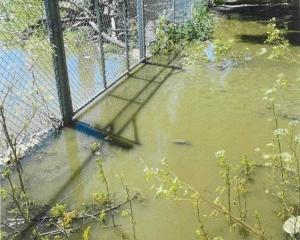
Some grim predictions were made on the future state of traffic on the southern corridor during a council planning and strategy meeting yesterday.
Cr Quentin Smith, of Wanaka, asked for impending issues with the southern corridor to be given "the highest level of alert" to the council’s partners, including NZ Transport Agency Waka Kotahi (NZTA).
"If we were to have a traffic light system ... this would be a flashing red light, with a siren on top of it," he said.
In an update to the committee on the Te Tapuae southern corridor structure plan — which has been progressed over the past year — strategic growth manager Anita Vanstone said the two-lane Kawarau Bridge, which opened in 2016, was fast approaching its capacity of 1500 vehicles per hour, per lane.
At present, peak demand was about 1200 vehicles an hour; the difference was the equivalent to between 600 and 900 additional residential units in the southern corridor, which stretches from Kelvin Heights to Kingston.
Existing and approved residential developments included Hanley’s Farm, Jack’s Point, Park Ridge (previously known as Coneburn) and an extension to the Kingston township.
"Under the existing travel behaviour profile, the Kawarau Bridge will not be able to accommodate demand generated by the existing zoned development," Ms Vanstone’s report warned.
That raised concerns about future developments, including those potentially going through the government’s new Fast-track Approvals Bill.
Modelling indicated there would be "gridlock" at peak periods, and travel times from the Queenstown CBD to, for example, the southern corridor would exceed 60 minutes, compared to today’s 15-20 minutes.
The public transport business case required "highly optimistic" mode-share percentages — between 49% and 53% — to maintain the operation of the bridge, which would be "remarkable" for an urban area bus network, the report said.
That business case also identified a demand, by 2033-39, for the Jack’s Point to Queenstown bus to operate every 15 minutes until midnight, and every 30 minutes from midnight until 2am, using buses with capacity for 110 passengers each.
A second bridge was being investigated, to help alleviate congestion, though there were "significant concerns" about what that would do to the rest of the network, the financial implications, geotechnical concerns and overall capacities it would unlock.
NZTA had also not given any funding commitment on it.
Minutes from a transport workshop in May show a gondola system was also being considered, which could link the southern corridor to Remarkables Park, Queenstown Airport and the Frankton bus hub.
However, the State Highway 6 corridor was deemed "unsuitable" due to conflict with NZTA design, functionality and safety requirements, and NZTA had also not committed any funding.
While the committee was asked to note the contents of the report, Cr Smith said the infrastructure deficit, particularly in transport, had reached "a critical level".
"NZTA have walked away from this as well.
"We’re admitting that we’re facing a network failure in two years, and we’ve got no answer ... [and] no investment."
Cr Smith noted investment in the southern corridor was only scheduled from year 7 of the 10-year plan.
"If we see the wall coming, we can’t just go, ‘yep, it’s coming’.
"I think we need to use the strongest possible words to say ... this is a crisis.
"How do we alert our partners, in the strongest possible terms, to say, ‘look, we’re in real trouble here if we don’t come up with a solution’?"












